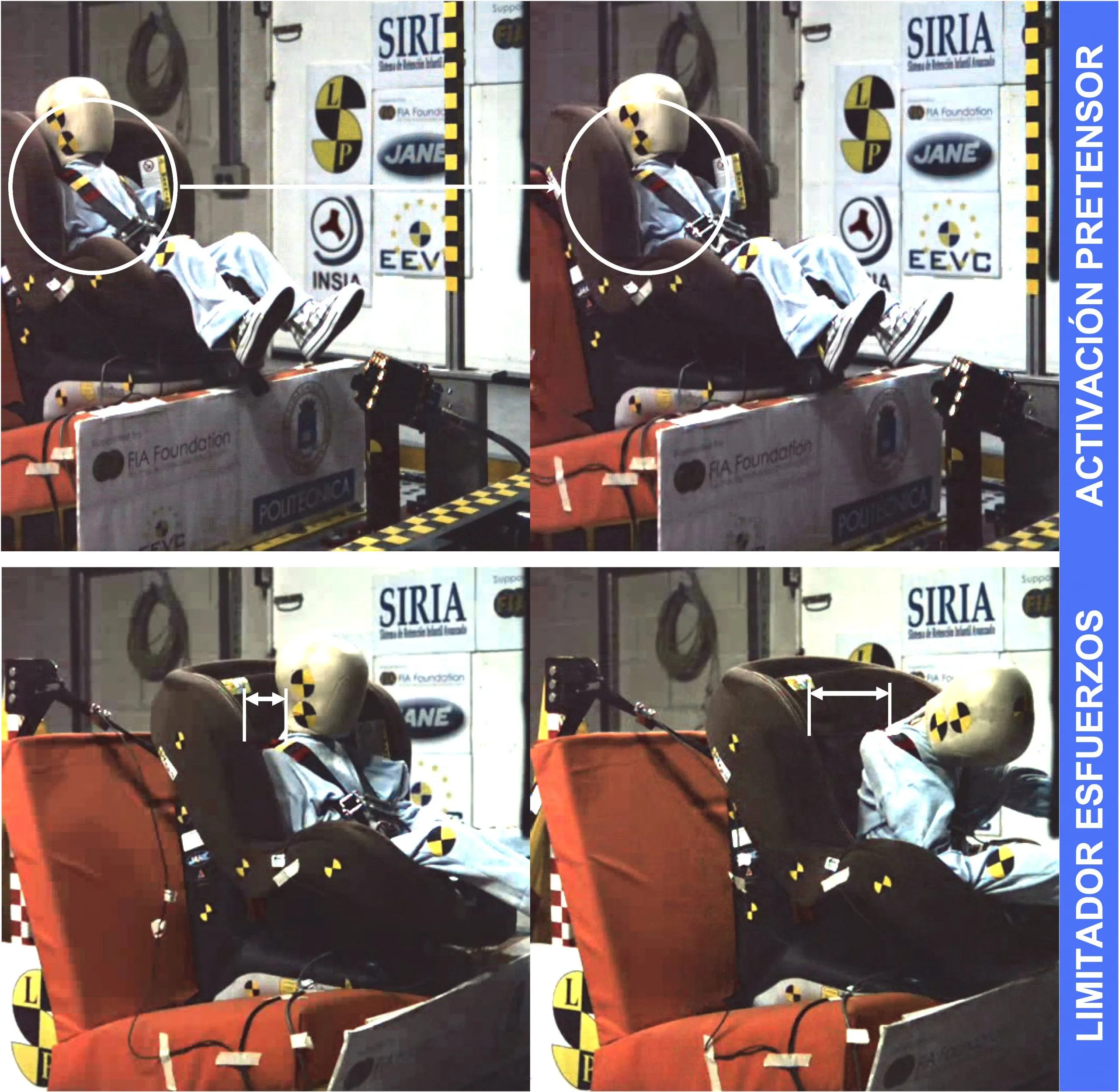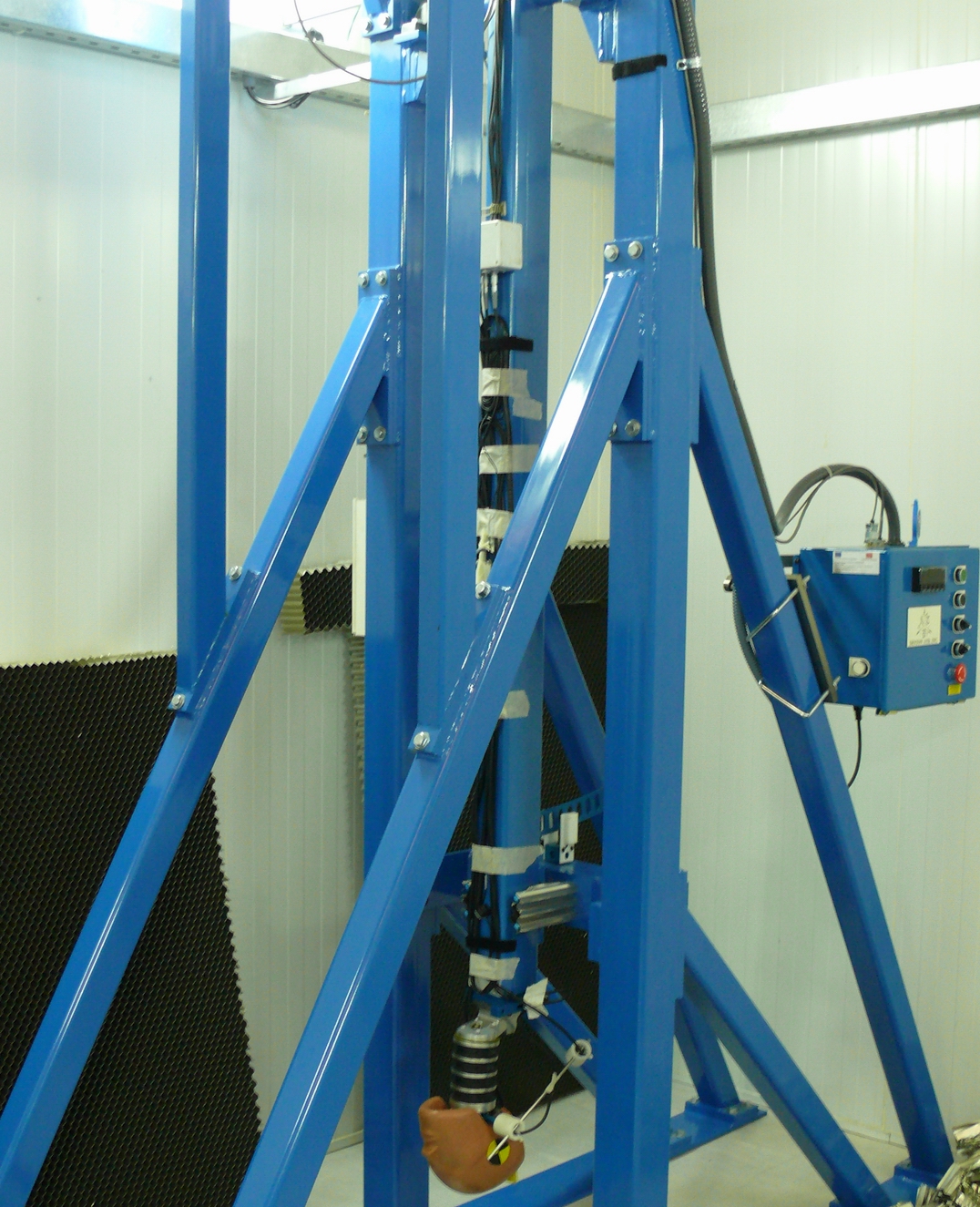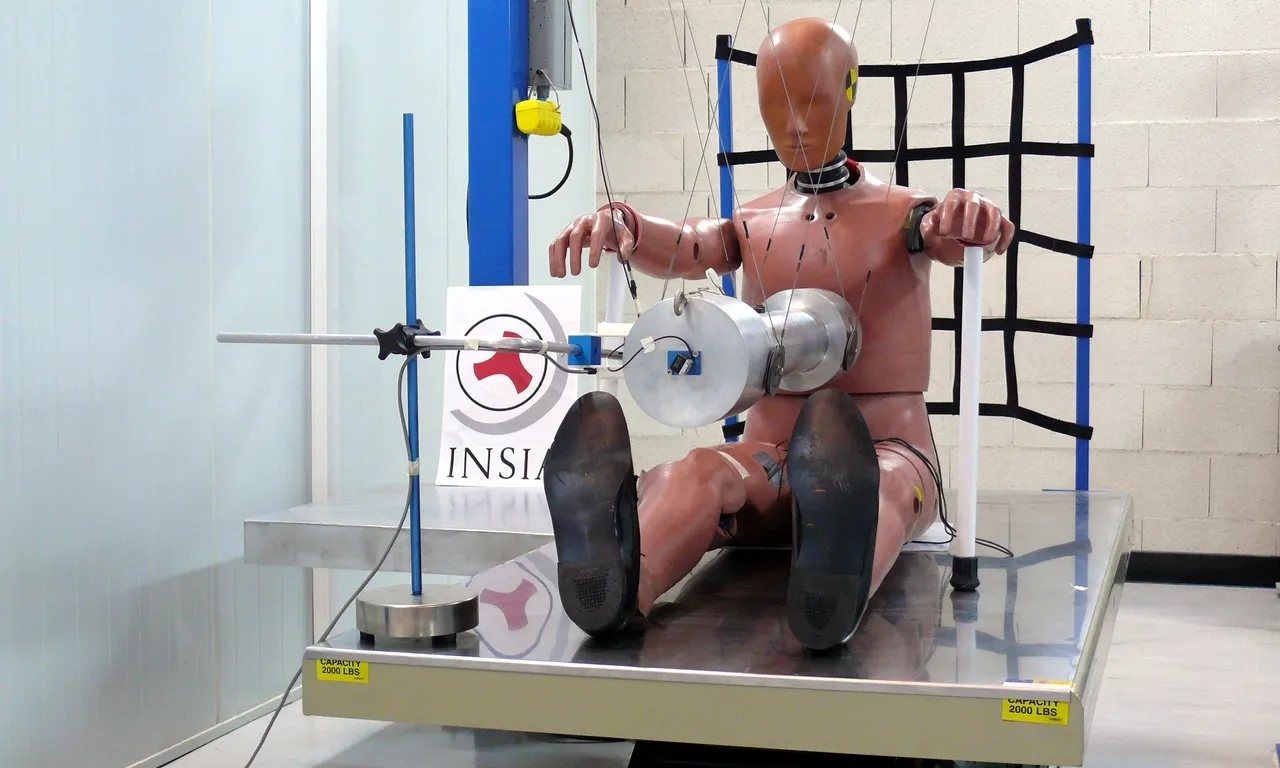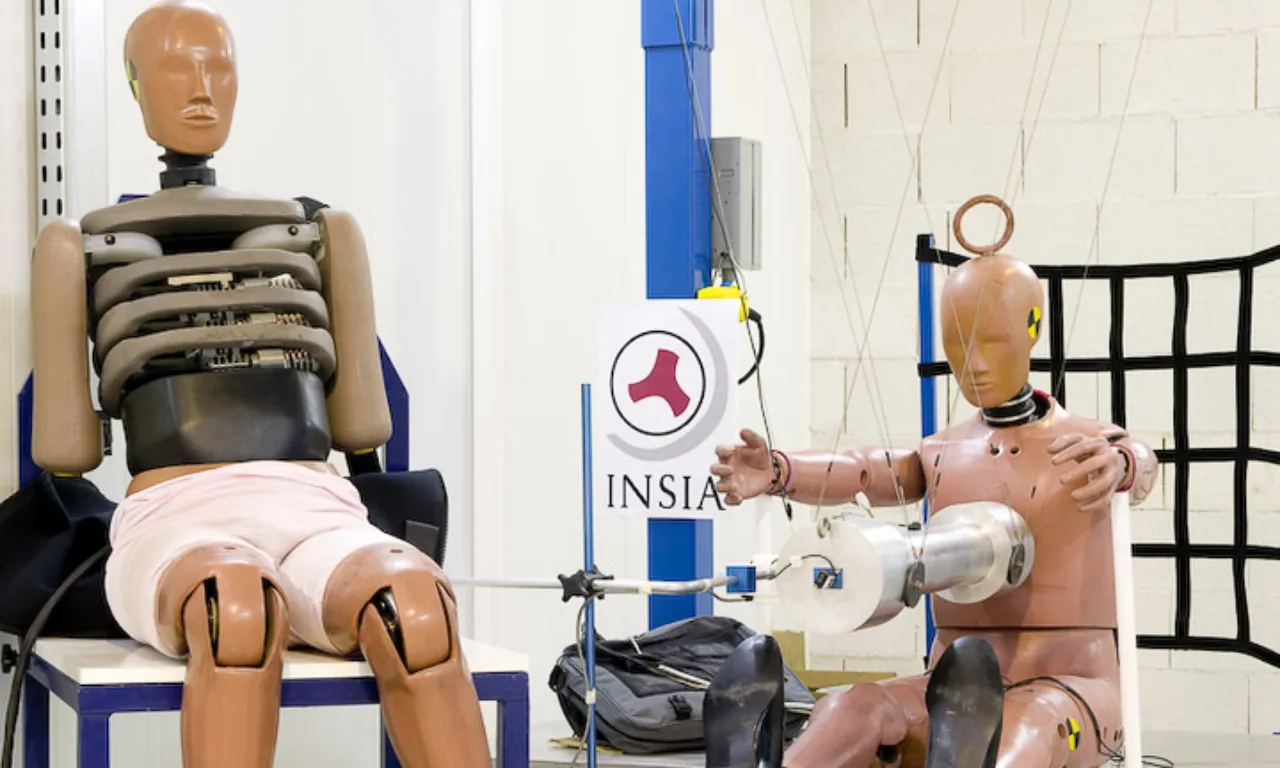Passive Safety Laboratory
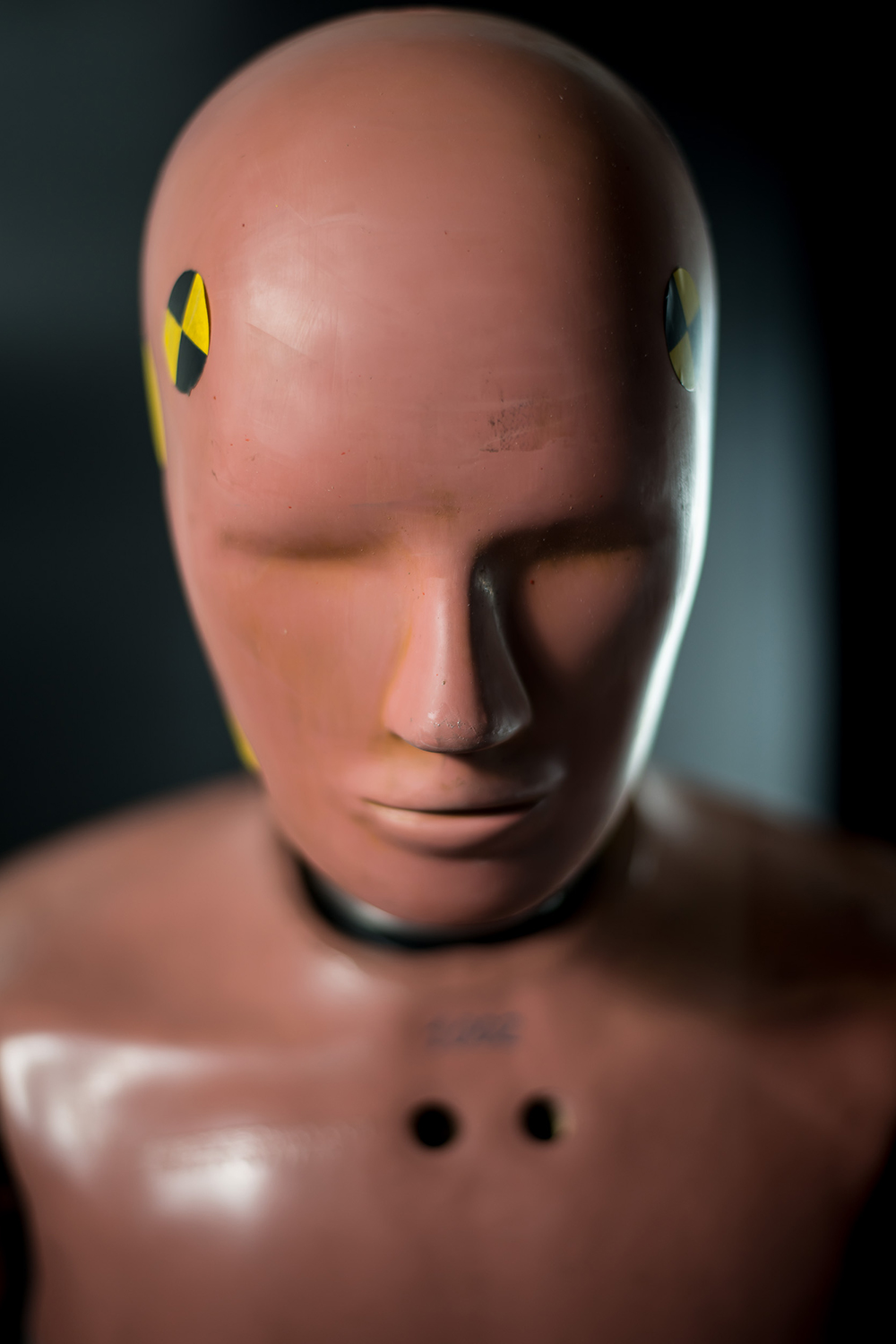
Passive Safety
- Sled test facility.
- Impact pendulum.
- Crash test dummies.
- Crash test dummy calibration fixtures.
- High speed cameras.
- Data acquisition.
- Software for signal and image processing.
- 3D measuring equipment.

REDLAB
En proceso de registro con la REDLAB
Responsible:
- Luis Martínez Sáez. Email: luis.martinez@upm.es
Members:
- Javier Fernando Rivera Hoyos
- Miguel Hidalgo Monjardín.
Address: INSIA. Carretera de Valencia, km.7. Campus Sur UPM
Zip Code: 28031
Locality: Madrid
Phone: 910678850
Tipos de Ensayos y Normas
- Test in accordance with Directive 74/708-96/37, R17, R80, “with regard to the strength of the seats and their anchorages”: dynamic sled tests.
- Ensayo según Directiva 74/60 o el R21, “relativo a absorción de energía”, en lo referente a: puntos a ensayar según el procedimiento de ensayo del ANEXO III de la directiva 74/60 o del Reglamento 21.
- Energy absorption tests in accordance with Regulations for School transport, Royal Decree 443/2001.
- Tests in accordance with Directive 78/932, R25, “with regard to headrests” referred to: energy absorption tests in accordance with what is described in point 6.1, Annex 1 of Directive 78/932.
- Ensayo según el Reglamento 44 y 129 “relativo a dispositivos de retención para niños” en lo referente a: ensayos dinámicos sobre carro, según lo descrito en el punto 8.1.3 del R44 y en el punto 7.1.3 del R129.
- Ensayos según ISO 10542-1, AS2942, UNE-1789 “Sistemas de sujeción de la silla de ruedas y/o del ocupante” en lo referente los ensayos dinámicos de resistencia, sistemas de retención y fijación del equipo en el compartimiento del paciente.
- Ensayos de choque mecánico para REESS según el Reglamento 100.
- Ensayos dinámicos para cinturones de seguridad según el Reglamento 16.
- Ensayos dinámicos de criterios de lesión y resistencia para mobiliario de ferrocarril según: GMRT 2100, APTA SS-C&S-016-99, APTA PR-CS-S-018-13, UNIFE y AV/ST9001.
Sled test facility
The sled test facility is used to reproduce deceleration pulses similar to those suffered by vehicle parts, on-board systems and occupants in the event of an impact.
The sled is accelerated to a specific impact velocity and then decelerated by polyurethane tubes or aluminium honeycomb panel.
- Maximum payload, 600kg.
- Maximum impact velocity, 55 km/h.
- Possibility to simulate pulses in accordance with R80, Directive 96/37, R44, ISO7176, AS2942, ISO/DIS 10542-2.
- Possibility to reproduce specific pulses.
- Up to 64on-board channels.
- High speed camera system (up to 4000 images/second).
- Events Generator (up to 8 airbags).
- Crash test dummies:
- Front impact dummies 50% percentil Hybrid III.
- Side impact dummies 50% percentil EuroSID1 and EuroSID2.
- Accelerometers, load cells and potentiometers for dummies depending on test requirements.
- H point mannequin.
.
Dummy calibration fixtures
Crash test dummies are tools to measure the human body’s response to an impact. Since these tools are measuring instruments, they need to be calibrated. Calibration is done on different dummy regions analysing the response to impact under specific test configurations.
These fixtures are part of the equipment needed to perform dummy calibration. Apart from the calibration fixtures, the Laboratory has equipment to calibrate the sensors used in the dummies.
Equipmenmt specifications
Available fixtures:
- Head.
- Neck.
- Thorax.
- Pelvis.
- Knee.
- Eurofoot.
Equipment for calibrating sensors:
-
- Universal traction machine for calibrating load cells.
- ENDEVCO accelerometer calibration equipment.
Impact Pendulum
The impact pendulum is a device to carry out tests with impactors of different mass and size.
Equipment widely used for characterising response to the impact of materials or parts, energy absorbed, force curve deformation, etc..
Equipment specifications
- Maximum impactor payload 350kg.
- Maximum impact velocity 28 km/h.
- 32 channels data acquisition system.
- High speed camera system (up to 4000 images/second).
- Great flexibility in configuring tests, impactors of different shapes and mass.
Apart from the above equipment, the Laboratory possesses equipment and software for the preparation and analysis of dynamic tests, of which it is worth mentioning:
- (FARO arm) 3D measuring machine.
- DIAdem signal and crash software.
- TEMA. LabVieW image analysis software.


